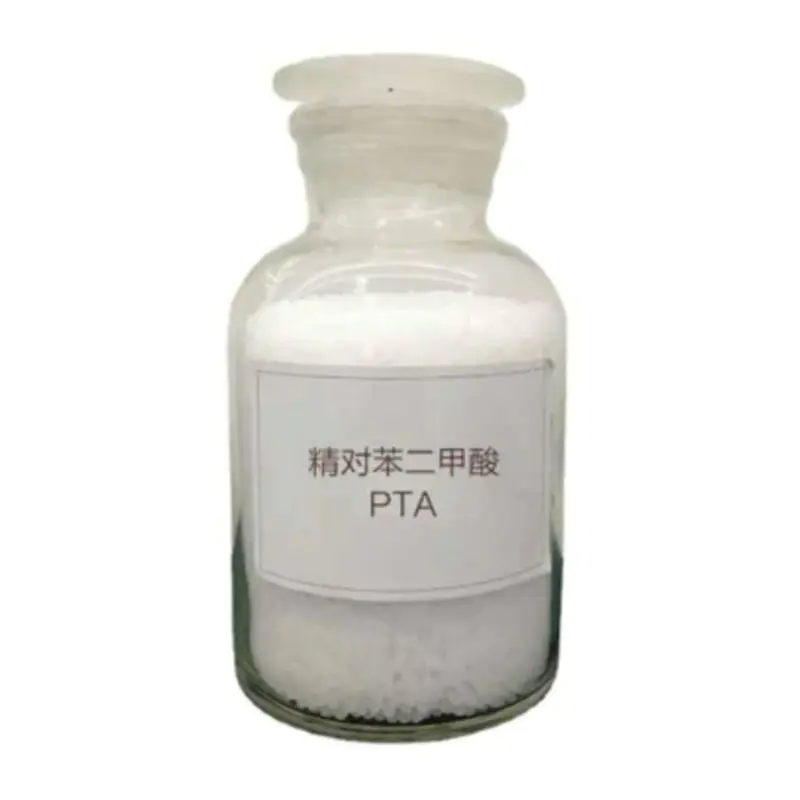Understanding p-Phthalic Acid: Key Properties and Applications
2024-12-05
p-Phthalic acid, also known as 1,4-benzenedicarboxylic acid, is a versatile and essential chemical compound with a wide range of industrial applications. As one of the most important aromatic carboxylic acids, it plays a critical role in the production of various materials, including plastics, dyes, and pharmaceuticals. In this blog, we’ll explore the key properties, uses, and significance of p-Phthalic acid in modern industries.
What is p-Phthalic Acid?
p-Phthalic acid is an organic compound with the molecular formula C₈H₆O₄. It consists of a benzene ring with two carboxyl groups (-COOH) attached in the para-position relative to each other. This structure imparts several important properties that make p-Phthalic acid highly valuable in chemical manufacturing.
Key Properties of p-Phthalic Acid
1. Physical Characteristics:
p-Phthalic acid is a white, crystalline solid that is soluble in alcohol, ether, and hot water, but it is practically insoluble in cold water. It has a melting point of around 300°C, making it suitable for high-temperature applications.
2. Chemical Reactivity:
As a carboxylic acid, p-Phthalic acid is acidic and can undergo a variety of chemical reactions, such as esterification and decarboxylation. These reactions are critical in producing important derivatives.
3. Stability:
The compound is relatively stable under normal conditions but can decompose at higher temperatures or in the presence of strong reducing agents. Its stability makes it useful in various industrial settings.
Applications of p-Phthalic Acid
1. Plasticizers:
One of the most common uses of p-Phthalic acid is in the production of phthalate esters, which are used as plasticizers in the manufacturing of flexible plastics, particularly polyvinyl chloride (PVC). These plasticizers improve the flexibility, workability, and durability of plastics.
2. Dyes and Pigments:
p-Phthalic acid is a precursor in the synthesis of certain dyes and pigments, including anthraquinone and other colorants used in textiles, inks, and coatings.
3. Pharmaceuticals:
p-Phthalic acid derivatives are employed in the pharmaceutical industry for the synthesis of various drugs. It plays a role in the development of medications used to treat a wide range of conditions, from anti-inflammatory drugs to antibiotics.
4. Polyesters:
p-Phthalic acid is a key raw material in the production of unsaturated polyester resins. These resins are used in applications ranging from automotive parts to construction materials, where they provide strength and durability.
5. Plastic Production:
p-Phthalic acid also serves as a building block for producing terephthalic acid, which is essential in the manufacture of polyester fibers and plastic bottles (PET).
Environmental and Safety Considerations
While p-Phthalic acid is widely used, there are some environmental and health considerations associated with its derivatives, particularly phthalates. Certain phthalates have been identified as endocrine disruptors, raising concerns about their use in consumer products. As a result, there has been growing interest in finding alternative, more sustainable plasticizers and materials.
p-Phthalic acid is a critical component in many industries, from plastics to pharmaceuticals. Its versatility and reactivity make it an essential raw material in the chemical industry. Understanding its properties and applications helps to appreciate its importance in manufacturing a wide range of materials that impact our daily lives. However, with the increasing environmental and safety concerns, the search for safer alternatives continues to shape the future of phthalate-based products.



